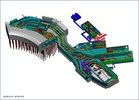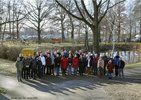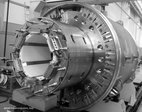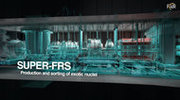
The Super-conducting FRagment Separator (Super-FRS) will be the most powerful in-flight separator in the world. Rare isotopes of all elements up to uranium will be produced at relativistic energies and spatially separated within a few hundred nanoseconds, enabling the study of very short-lived nuclei. The Super-FRS is the central device of the NUSTAR collaboration.
The Super-FRS is constructed in the frame of the FAIR international project. Scientists, engineers, and technicians of several countries are working together to carry out the construction of the machine. The core team as well as the corresponding Taskforce Early Science is working on GSI-FAIR campus.

The realization of the Super-FRS machine is a sub-project of the FAIR international project. The sub-project Super-FRS has a defined scope (established by means of the Work Breakdown Structure), within defined time-planning and costs. Six shareholder countries and several international companies are involved in the sub-project.









